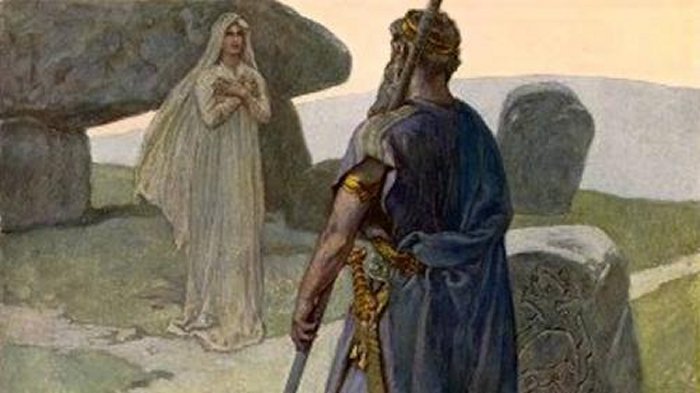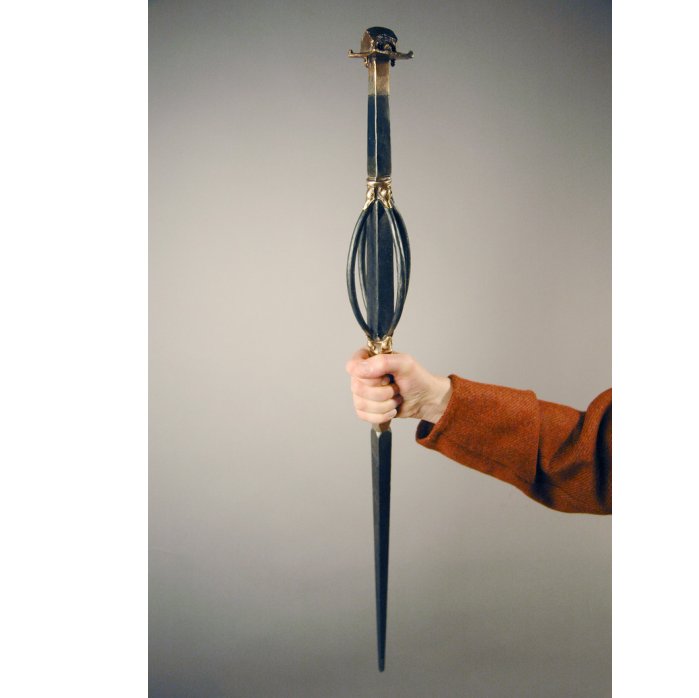Norse Shamanism: A Völva And Her Prophecies Were Feared Among Norse Gods And Vikings
Ellen Lloyd - AncientPages.com - The Völva was a mighty female shaman and seer in Norse mythology.
She held an important place in the ancient Viking society, and her powers were considered so strong that not only Vikings feared her prophecies.
But there were also other Norns, both benevolent and malevolent, who had enough power to reverse a person’s fortune.
Even Odin, the greatest of all Norse gods, consulted her to learn about his future and other divinities.
In Völuspa, Odin offered the völva his necklace and rings as payment for telling him the future. She foretold the creation of the world, the first gods, the first people, and Ragnarök – the end of the world.
What Is Norse Shamanism?
The Völva was considered a Seiðr (sometimes anglicized as seidhr, seidh, seidr, seithr, seith, or seid) is an Old Norse term for a type of sorcery that was practiced in Norse society during the Late Scandinavian Iron Age.
According to Norse mythology, the Norns were shapers of destiny and recorded days in a person's life. They were the foremost masters of seidr.
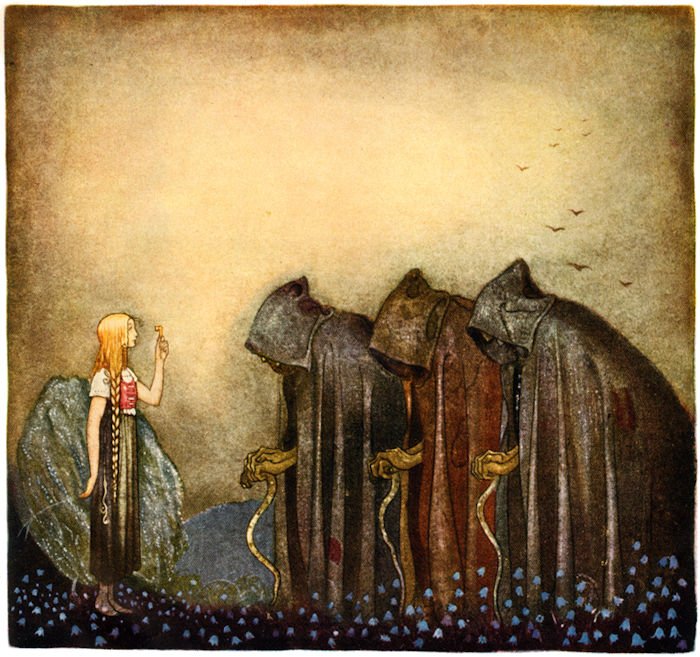 Guldnyckeln by John Bauer (1882–1918). Credit: Public Domain
Guldnyckeln by John Bauer (1882–1918). Credit: Public Domain
A Seiðr could not only foretell the future but also raise storms, journey or battle in animal form, send a nightmare to kill someone by suffocation in his sleep, and cast love spells.
But there were also other Norns, both benevolent and malevolent, who had enough power to reverse a person's fortune.
In his book Viking Way: Religion and War in Late Iron Age Scandinavia, archaeologist Neil Price writes:
"There were seiðr rituals for divination and clairvoyance; for seeking out the hidden, both in the secrets of the mind and in physical locations; for healing the sick; for bringing good luck; for controlling the weather; for calling game animals and fish.
Goddess Freya was the most powerful völva. James Doyle Penrose (1862-1932) - Credit: Public Domain
Importantly, it could also be used for the opposite of these things – to curse an individual or an enterprise; to blight the land and make it barren; to induce illness; to tell false futures and thus to set their recipients on a road to disaster; to injure, maim and kill, in domestic disputes and especially in battle."
The name Völva (vǫlva) is Old Norse and means "wand carrier" or "carrier of a magic staff." In Norse Sagas, a völva is often described as an older woman who appears late at night. She is dressed in a dark foot-length cloak and holds a magical staff in her hand.
In some Norse myths and sagas, it is written that the wand she held had the power of causing forgetfulness in anyone who tapped it three times on the cheek.
Freya: Norse Goddess Who Was The Most Prominent Völva
The art of prophecy was a divine gift that the Norse goddess Freya taught Odin and the Aesir, Norse gods associated with war, magic, and the sky.
In Norse mythology, Freya is a powerful goddess. She belongs to a group of Gods and Goddesses known as the Vanir, associated with nature, wild places and animals, and unseen realms.
Reconstruction of Klinta rod, a völva staff. Photo: Oskar Kullander / SHM
She is considered to be the goddess of Love and Beauty but is also a warrior goddess and one of great wisdom and magic. Freya, who always had a wand in her hand, was the most prominent völva.
A Völva Needed Her Magical Staff To Foretell The Future
The most detailed account of such a woman and her craft comes from The Saga of Erik the Red. In the saga, a Völva comes to a settlement in Greenland to prophesy for the community. The völva wandered from town to town and farm to farm, performing commissioned acts of magic in exchange for room, board, and other forms of compensation.
Archaeologists have discovered ancient artifacts that might be a wand carried by the Norse female shamans.
The most delicate ancient rod - found in a Viking woman's grave on Öland - is stored at the Historical Museum in Sweden.
Finds from a vǫlva's grave in Köpingsvik, Öland. There is an 82 cm long wand of iron with bronze details and a unique model of a house on the top. Image credit: Swedish History Museum in Stockholm.
. The rod is about one meter long and interrupted at one end. It is made of iron with bronze details. A house in miniature crowns a top. Perhaps it is a symbol of Freya's house, "Folkvang." In the tomb, other items showed that the dead woman had a special status. Maybe the deceased woman was a völva.
A völva needed the magical staff to foretell the future. While excavating some ancient graves in Scandinavia, scientists have also discovered traces of cannabis and other drugs most likely used during the rituals.
A völva was just as respected as much as her prophecies were feared. Like many other shamans in ancient cultures, the Norse völva was set apart from her wider society, both in a positive and a negative sense.
Updated on December 22, 2023
Written by Ellen Lloyd – AncientPages.com
Copyright © AncientPages.com All rights reserved. This material may not be published, broadcast, rewritten or redistributed in whole or part without the express written permission of AncientPages.com
More From Ancient Pages
-
 Gilmerton Cove: Mysterious Cave System Still Keeps Its Centuries-Old Secrets
Featured Stories | Nov 27, 2021
Gilmerton Cove: Mysterious Cave System Still Keeps Its Centuries-Old Secrets
Featured Stories | Nov 27, 2021 -
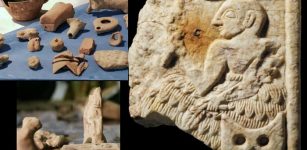 Hundreds Of Thousands Of Sumerian Artifacts Have Been Stolen From Iraq’s Museums And Archaeological Sites
Artifacts | Dec 7, 2020
Hundreds Of Thousands Of Sumerian Artifacts Have Been Stolen From Iraq’s Museums And Archaeological Sites
Artifacts | Dec 7, 2020 -
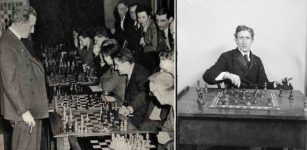 On This Day in History: Brilliant U.S. Chess Champion F. J. Marshall Plays 105 Games Simultaneously – On Mar 21, 1916
News | Mar 21, 2017
On This Day in History: Brilliant U.S. Chess Champion F. J. Marshall Plays 105 Games Simultaneously – On Mar 21, 1916
News | Mar 21, 2017 -
 How ‘Listening’ To Archaeological Sites Could Shed Light On The Past
Archaeology | Dec 8, 2023
How ‘Listening’ To Archaeological Sites Could Shed Light On The Past
Archaeology | Dec 8, 2023 -
 Mystery Of The Ashkenazi Jews Found In A Medieval Mass Burial – Solved!
Archaeology | Aug 30, 2022
Mystery Of The Ashkenazi Jews Found In A Medieval Mass Burial – Solved!
Archaeology | Aug 30, 2022 -
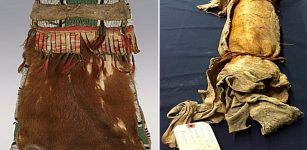 Sacred Medicine Bundle With Relics Of The First Ancestors Or Given By The Gods
Ancient Traditions And Customs | Sep 15, 2016
Sacred Medicine Bundle With Relics Of The First Ancestors Or Given By The Gods
Ancient Traditions And Customs | Sep 15, 2016 -
 Underground Labyrinth With Secret Passages, Tunnels In Dobrogea Plateau, Romania
Featured Stories | May 9, 2022
Underground Labyrinth With Secret Passages, Tunnels In Dobrogea Plateau, Romania
Featured Stories | May 9, 2022 -
 Pandavleni Caves: Skillfully Carved Rocky Realms Decorated With Sculptures And Inscriptions In Brahmi Script
Featured Stories | Aug 1, 2016
Pandavleni Caves: Skillfully Carved Rocky Realms Decorated With Sculptures And Inscriptions In Brahmi Script
Featured Stories | Aug 1, 2016 -
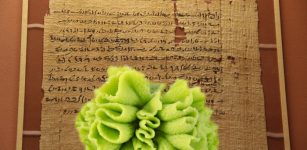 Wasabi Plant Can Save Ancient Bio-Deteriorated Papyrus
Scripts, Paintings & Inscriptions | Apr 4, 2024
Wasabi Plant Can Save Ancient Bio-Deteriorated Papyrus
Scripts, Paintings & Inscriptions | Apr 4, 2024 -
 What Routes Did Homo Sapiens Take On His Way From Africa To Europe And Asia? Out Of Africa Path Examined
Archaeology | Dec 26, 2021
What Routes Did Homo Sapiens Take On His Way From Africa To Europe And Asia? Out Of Africa Path Examined
Archaeology | Dec 26, 2021 -
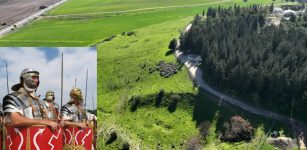 First Roman Military Amphitheater Unearthed Near Megiddo
Archaeology | Jun 1, 2022
First Roman Military Amphitheater Unearthed Near Megiddo
Archaeology | Jun 1, 2022 -
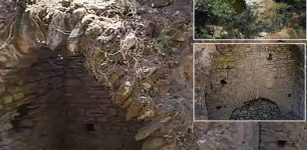 Colosseum-Like Structure Unearthed In 2700-Year-Old Ancient City Of Mastaura
Archaeology | Aug 22, 2020
Colosseum-Like Structure Unearthed In 2700-Year-Old Ancient City Of Mastaura
Archaeology | Aug 22, 2020 -
 Ivar The Boneless: Famous Viking And Son Of Ragnar Lodbrok
Featured Stories | Jun 6, 2016
Ivar The Boneless: Famous Viking And Son Of Ragnar Lodbrok
Featured Stories | Jun 6, 2016 -
 Secret Kumari Kandam Continent And Links To Lemurians
Civilizations | May 18, 2020
Secret Kumari Kandam Continent And Links To Lemurians
Civilizations | May 18, 2020 -
 What Is The Codex Sinaiticus And What Does It Mean?
Ancient History Facts | Feb 5, 2019
What Is The Codex Sinaiticus And What Does It Mean?
Ancient History Facts | Feb 5, 2019 -
 India’s Mysterious Stonehenge: Prehistoric Complex Of Gigantic Standing Stones Of Willong Is An Enigma
Featured Stories | Jul 30, 2016
India’s Mysterious Stonehenge: Prehistoric Complex Of Gigantic Standing Stones Of Willong Is An Enigma
Featured Stories | Jul 30, 2016 -
 Pax Romana: 200-Year-Long Period Of Stability Within The Roman Empire
Ancient History Facts | Apr 19, 2016
Pax Romana: 200-Year-Long Period Of Stability Within The Roman Empire
Ancient History Facts | Apr 19, 2016 -
 Tiny Tools And Skills Of Mysterious Toaleans People In Southernmost Sulawesi, Indonesia
Archaeology | May 27, 2021
Tiny Tools And Skills Of Mysterious Toaleans People In Southernmost Sulawesi, Indonesia
Archaeology | May 27, 2021 -
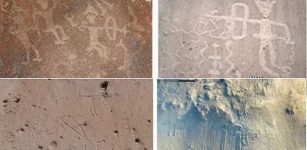 Evidence Of 10,000 Years Of Violent Conflict Among The Hunter-Gatherer Societies In The Atacama Desert
Archaeology | Oct 2, 2023
Evidence Of 10,000 Years Of Violent Conflict Among The Hunter-Gatherer Societies In The Atacama Desert
Archaeology | Oct 2, 2023 -
 The Battle Of Anghiari – Lost Painting Of Leonardo Da Vinci – One Of Art History’s Greatest Mysteries
Artifacts | Jan 24, 2018
The Battle Of Anghiari – Lost Painting Of Leonardo Da Vinci – One Of Art History’s Greatest Mysteries
Artifacts | Jan 24, 2018

